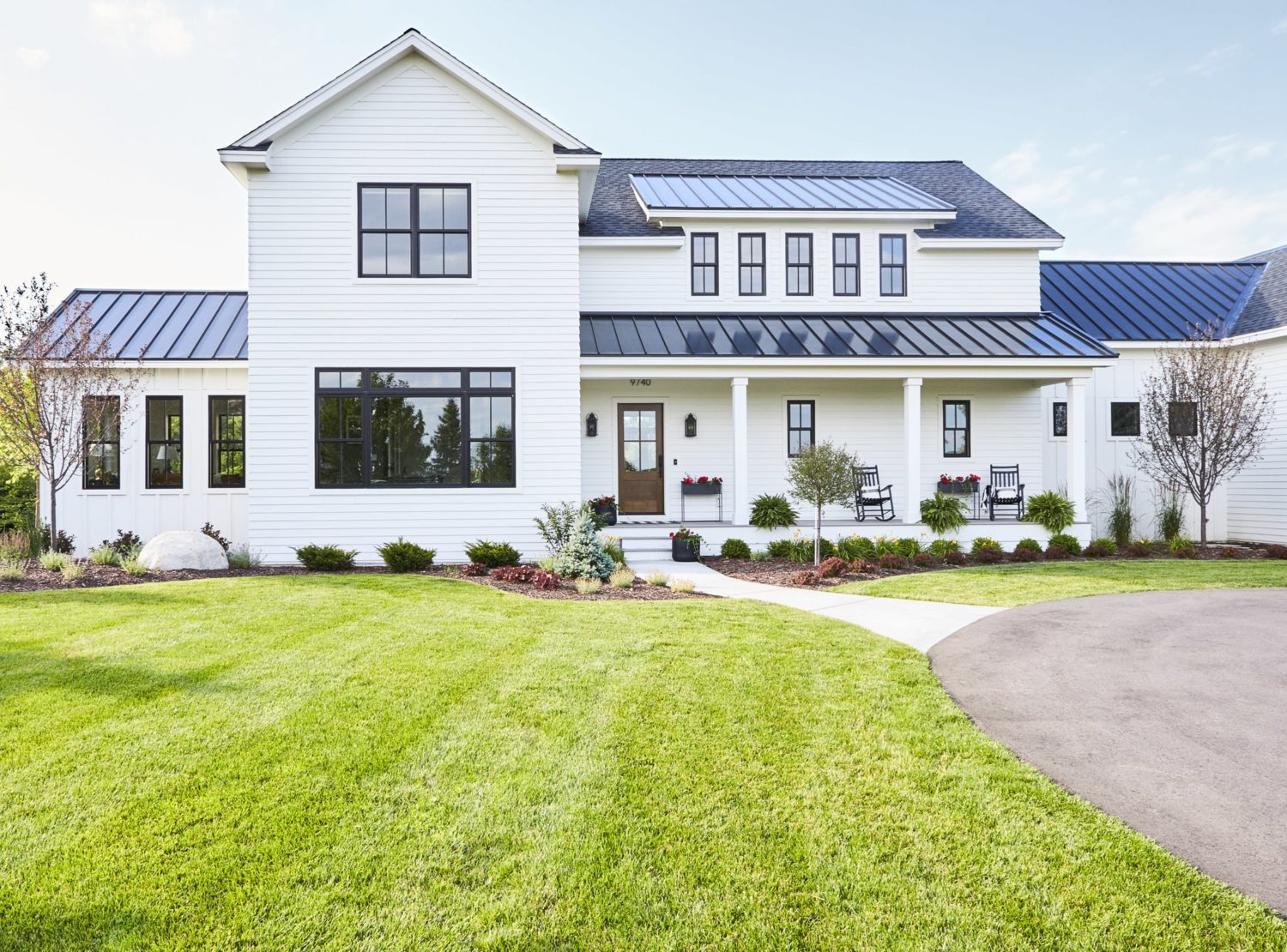What is Modern Farmhouse
The Classic Farmhouse is a staple of the American landscape, they dot the rural landscape with their simple materials and utilitarian form. They were born during the colonial era and their period lasted through the white settlement of the American interior and persisted through the mid twentieth century. Born of a need for simple and effective housing for the modest family farm they are defined by a few key characteristics including, simple rectangular floor plans, simple native materials, frequent additions, one and a half or two stories, light colors, large porches, natural fireplaces and or woodstoves, gable end roofs, and relatively small windows. Construction of the classic farmhouse waned by the mid twentieth century as a variety of factors lead to the decline of the family farm. However there has been a revived interest in the Classic Farmhouse called the Modern Farmhouse.

History
After WWII agriculture in the United States changed rapidly. Before World War II agriculture was heavily reliant on the family farm and manual labor. After the war changes in agricultural business, technology, and shifting societal norms largely spelled the end of the family farm and at the same time the Classic Farmhouse. At the same time the United States began pursuing a policy of de densifying housing, this was achieved by use of single family zoning, the interstate highway system, and subsequent demolition of vast swathes of American cities to make way for parking and highways.
One result of this policy was the proliferation of the American suburb a now ubiquitous aspect of American culture characterized at first by tracts of modest single story mid century modern and one and a half story cape cod homes. In later decades tracts of colonial homes and sometimes the unsightly McMansion would dominate the suburbs. In the late 2010s a new trend in the American suburb has emerged, the Modern Farmhouse.
Defining Characteristics
-
Built in the suburbs
Far away from their roots in rural America, most Modern Farmhouse homes are ironically being built in the suburbs.
-
Large windows with generally dark frame and sash colors
In a departure from their ancestors the Modern Farmhouse will generally have large windows often with dark sash colors.
-
Light colors inside and out
Similar to the Classic Farmhouse the modern farmhouse will feature light colors on both the inside and outside.
-
Simple trim inside and out
The Modern Farmhouse will generally feature simple trims around their windows and doors.
-
Simple fixtures
The Modern Farmhouse will have simple faucets, showers, and light fixtures. For example it's not uncommon to see gooseneck lighting on the exterior of a Modern Farmhouse.
-
Multiple roof and siding materials
In an homage to their ancestors having multiple additions, the modern farmhouse will often use multiple roofing and siding materials in order to try to mimic the look of additions.
-
Use of natural materials
Just like their ancestors the Modern Farmhouse makes use of natural materials like stone, brick, natural finished wood, and natural fibers.
Criticisms
When done right I generally like the Modern Farmhouse look, however that said it's growing popularity means it's frequently copied, and every time it's copied it loses some of its nuance and charm. Its not uncommon to see a Modern Farmhouse with so many siding and roofing types haphazardly placed all over with no regard for lines and proportion that the house looks like a caricature of a farmhouse. The Modern Farmhouse is also showing up in mass produced housing where entire subdivisions are made up of entirely Modern Farmhouses, which is deeply antithetical to their humble origins in rural America. It would be far more appropriate to use a few Modern Farmhouses in a subdivision to mimic the look of incremental development of a family farm. I would like to see better execution and use of this architectural style, but I think the Modern Farmhouse may turn into the McFarmhouse.
